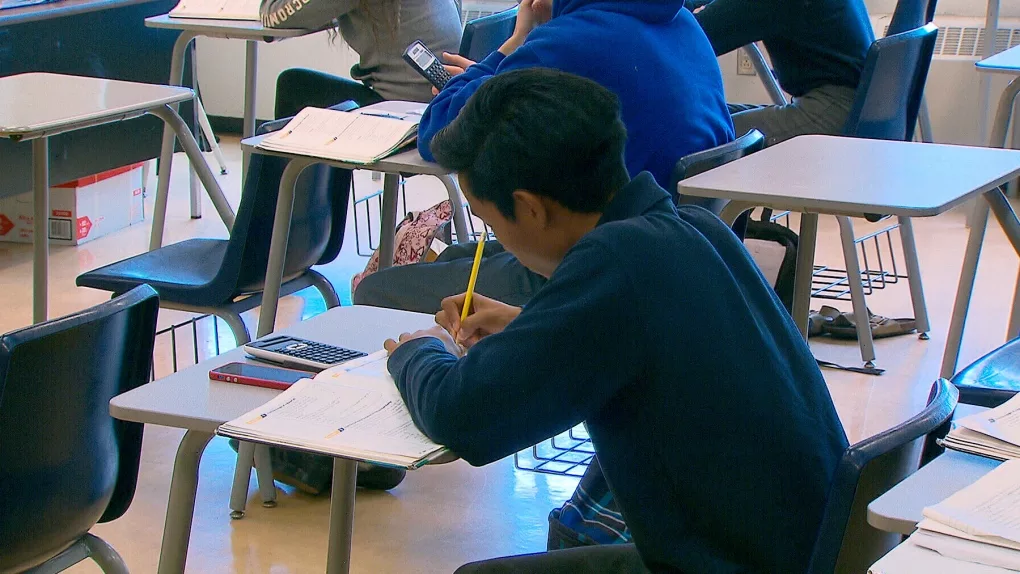Technology has revolutionized various aspects of our lives, including education. In Ontario, technology is playing an increasingly vital role in classrooms, transforming traditional teaching and learning approaches. In this guest post, we will explore how technology is enhancing learning experiences in Ontario schools.
From interactive educational tools to online resources, we will delve into the benefits of integrating technology in education. As we navigate the digital age, it is crucial to understand the positive impact of technology on student engagement, personalized learning, and preparing students for the future.
Table of Contents
The Role of Technology in Education: Enhancing Learning Experiences in Ontario Schools
Integrating Technology into the Curriculum: Transforming Teaching and Learning
Integrating technology into the curriculum has the power to transform teaching and learning experiences in Ontario schools. Technology provides educators with a vast array of resources and tools that enhance instructional methods, engage students, and promote active learning. By incorporating technology into lesson plans, teachers can create dynamic and interactive learning experiences that cater to students’ diverse learning styles and abilities.
Technology can be used to present information in multimedia formats, such as videos, interactive presentations, and virtual simulations, making complex concepts more accessible and engaging. It also enables teachers to differentiate instruction by offering personalized learning experiences tailored to individual student needs. Students can access online resources, participate in virtual discussions, collaborate on projects, and receive immediate feedback, fostering a more student-centered approach to learning.
Digital Literacy Skills: Preparing Students for the Digital Age
Digital literacy skills are essential in preparing students for success in the digital age. Ontario schools recognize the importance of equipping students with the knowledge and skills to navigate and utilize technology effectively. Digital literacy encompasses the ability to find, evaluate, and critically analyze information online, as well as responsible and ethical use of digital tools.
Through the integration of technology, students develop digital literacy skills as they engage in research, access online databases, evaluate online sources for credibility, and communicate using digital platforms. These skills are transferable and equip students with the ability to navigate the vast amount of information available, think critically, solve problems, and collaborate effectively in a technology-driven world.
Interactive Learning Tools: Engaging Students in Active Learning
Interactive learning tools play a crucial role in engaging students and promoting active learning in Ontario schools. These tools encompass a wide range of applications and platforms that encourage student participation, interaction, and exploration. From interactive whiteboards and educational apps to online quizzes and gamified learning platforms, interactive tools provide opportunities for students to actively engage with the content and take ownership of their learning.
Interactive tools can be used in various ways, such as conducting virtual experiments, engaging in virtual field trips, participating in online discussions, and solving interactive puzzles. These activities not only make learning more enjoyable but also enhance student understanding and retention of the material. By integrating interactive tools into the classroom, teachers create a dynamic and engaging learning environment that fosters curiosity, critical thinking, and problem-solving skills.
Virtual Reality in Education: Opening New Doors to Exploration and Discovery
Virtual reality (VR) is revolutionizing education by opening new doors to exploration and discovery in Ontario schools. VR technology allows students to immerse themselves in virtual environments that simulate real-world experiences. From exploring historical landmarks to diving deep into the ocean, students can engage in virtual field trips and firsthand experiences that were previously inaccessible.
By using VR, students can actively participate in their learning, interact with 3D models, and gain a deeper understanding of complex concepts. They can visualize abstract ideas, manipulate objects, and engage in hands-on learning experiences without leaving the classroom. VR also promotes empathy by allowing students to experience different perspectives and cultures.
Online Learning Platforms: Expanding Access to Education
Online learning platforms are expanding access to education and providing flexible learning opportunities for students in Ontario schools. These platforms offer a wide range of courses, resources, and interactive materials that can be accessed remotely, enabling students to learn at their own pace and according to their own schedules.
Online learning platforms allow for personalized learning experiences, catering to the individual needs and interests of students. They provide access to a wealth of educational materials, including videos, e-books, interactive exercises, and assessments. Students can engage in self-directed learning, review content, seek additional resources, and collaborate with peers and teachers through virtual discussion forums and video conferencing.
Online learning platforms also support students who may require alternative learning environments, such as those with medical conditions or exceptional circumstances that prevent regular attendance at school. These platforms ensure that all students, regardless of their location or circumstances, have access to quality education and can continue their learning journeys.
Adaptive Learning Technology: Personalizing Education for Every Student
Adaptive learning technology is revolutionizing education by personalizing the learning experience for every student in Ontario schools. This technology uses sophisticated algorithms and data analytics to assess students’ strengths, weaknesses, and learning styles. Based on this information, adaptive learning platforms deliver personalized content, activities, and assessments that cater to each student’s individual needs.
By adapting to students’ unique learning profiles, adaptive learning technology helps to fill knowledge gaps, provide targeted support, and challenge students at their appropriate levels. It allows students to progress at their own pace, ensuring they fully grasp the concepts before moving on to more advanced topics. This personalized approach enhances student engagement, motivation, and academic success.
Adaptive learning technology also provides real-time feedback and progress tracking for both students and teachers. Students receive immediate feedback on their performance, allowing them to identify areas for improvement and take ownership of their learning. Teachers can access data and insights to monitor student progress, identify common misconceptions, and tailor their instruction to meet individual student needs effectively.
Flipped Classroom Model: Reinventing the Traditional Learning Environment
The flipped classroom model is reinventing the traditional learning environment in Ontario schools by leveraging technology to transform instructional practices. In a flipped classroom, students engage with instructional content, such as pre-recorded lectures or readings, outside of the classroom. Class time is then dedicated to activities that reinforce understanding, encourage collaboration, and facilitate deeper learning.
Technology plays a vital role in implementing the flipped classroom model. Students can access online resources, videos, and interactive materials at their own pace, allowing them to review and reinforce concepts independently. In the classroom, teachers can facilitate discussions, provide individualized support, and engage students in hands-on activities that promote critical thinking and problem-solving skills.
The flipped classroom model promotes active learning, as students have the opportunity to engage with the content before coming to class. It also encourages student-centered learning, as students take more responsibility for their learning and actively participate in discussions and collaborative activities. This approach fosters a deeper understanding of the material and encourages higher-order thinking skills.
Collaborative Tools and Communication Platforms: Fostering Student Collaboration and Connection
Collaborative tools and communication platforms are fostering student collaboration and connection in Ontario schools. Technology provides a range of tools and platforms that enable students to collaborate, communicate, and work together on projects, regardless of physical distance.
Online collaborative tools, such as shared documents, project management platforms, and virtual whiteboards, facilitate group work and enable students to contribute and collaborate in real-time. Students can work on assignments together, provide feedback to peers, and engage in discussions that promote critical thinking and problem-solving skills.
Communication platforms, such as video conferencing tools and online discussion forums, allow students to connect with their classmates and teachers beyond the physical classroom. These platforms provide opportunities for students to ask questions, seek clarification, and engage in meaningful discussions. They foster a sense of community and facilitate the exchange of ideas, perspectives, and knowledge.
Data-Driven Decision Making: Leveraging Technology for Educational Insights
Data-driven decision making is a powerful tool in leveraging technology for educational insights in Ontario schools. Technology allows for the collection, analysis, and interpretation of vast amounts of data related to student performance, engagement, and learning progress.
Through learning management systems, assessment platforms, and analytics tools, educators can gain valuable insights into students’ strengths, weaknesses, and learning patterns. This data helps inform instructional strategies, identify areas that require additional support, and tailor interventions to meet individual student needs effectively.
Data-driven decision making also supports educational planning and policy development at the school and district levels. By analyzing trends and patterns in student data, educational leaders can identify areas for improvement, allocate resources strategically, and make informed decisions that positively impact student outcomes.
Ethical Use of Technology: Nurturing Responsible Digital Citizenship
Promoting the ethical use of technology is crucial in nurturing responsible digital citizenship in Ontario schools. With the increasing reliance on technology in education, it is essential to educate students about their rights and responsibilities as digital citizens.
Schools play a vital role in teaching students about internet safety, cyberbullying prevention, copyright laws, and the responsible use of digital resources. By integrating digital citizenship education into the curriculum, students learn about ethical online behavior, respecting privacy, and appropriate online communication.
Educators can use technology to foster discussions and activities that explore ethical dilemmas related to technology use. They can encourage critical thinking and decision-making skills, guiding students to make responsible choices when using technology. By nurturing responsible digital citizenship, Ontario schools ensure that students are equipped to navigate the digital world safely, ethically, and responsibly.
In conclusion, the role of technology in education is paramount in enhancing learning experiences in Ontario schools. By integrating technology into the curriculum, promoting digital literacy, utilizing interactive tools, exploring virtual reality, embracing online learning platforms, leveraging adaptive learning technology, implementing the flipped classroom model, facilitating collaboration, utilizing data-driven decision making, and nurturing responsible digital citizenship, Ontario schools can create an educational environment that prepares students for success in the digital age. With technology as a catalyst, students can engage in immersive, personalized, and interactive learning experiences that foster critical thinking, collaboration, and lifelong learning skills.
Conclusion
Technology has become a game-changer in education, enhancing learning experiences in Ontario schools. From access to digital resources and interactive learning tools to personalized instruction and collaborative learning, technology offers numerous benefits for students and educators alike.
By embracing technology and leveraging its potential, Ontario schools are equipping students with the skills they need to thrive in a rapidly evolving world. As we continue to embrace technological advancements, it is essential to foster responsible digital citizenship and ensure equitable access to technology, bridging the digital divide and promoting inclusive education for all students in Ontario.



